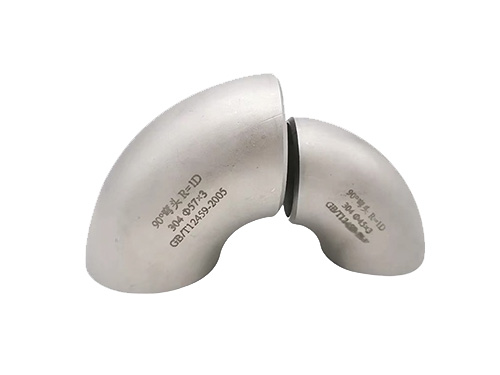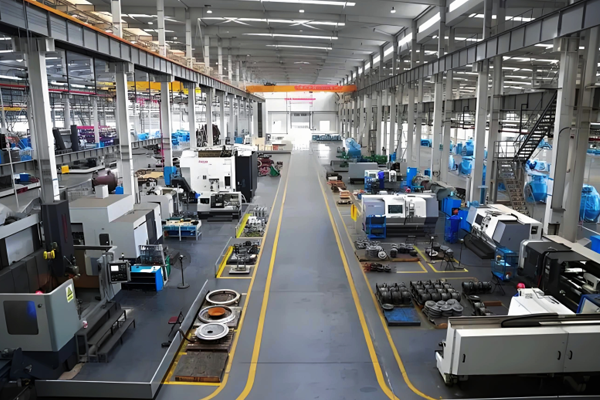
90° elbow
1、 Basic definition and core role
A 90 ° elbow is a type of pipe fitting used to change the direction of a pipeline, allowing fluids (liquids, gases, or powders) to achieve a 90 ° right angle turn in the pipeline. It is one of the most commonly used types of elbows in pipeline systems.
Its core function is to connect two pipelines with the same or different nominal diameters, flexibly adjust the pipeline direction without affecting the fluid transport efficiency, and adapt to different spatial layouts and engineering requirements.
2、 Main categories
According to different classification criteria, 90 ° elbows can be classified into various types:
1. Divided by curvature radius
Long Radius Bend: The curvature radius R is 1.5 times the outer diameter of the pipeline (1.5D).
Features: Low fluid resistance, most widely used, suitable for most low and medium pressure piping systems (such as water supply and drainage, HVAC).
Short radius elbow: curvature radius R=1 times the outer diameter of the pipeline (1.0D).
Features: More compact in size, space saving, but with high fluid resistance, suitable for scenarios with limited space or low resistance requirements (such as internal pipelines of equipment, small-diameter low-pressure systems).
2. Divided by connection method
Welded Bend: Both ends are connected to the pipeline by welding, suitable for systems with high pressure, high temperature, or high sealing requirements (such as petrochemical and power pipelines).
Threaded Bend: With internal or external threads on both ends, it can be connected to pipelines through threads for easy installation. It is suitable for low-pressure, small-diameter pipelines (such as household water pipes and small industrial equipment).
Flanged Bend: With flanges at both ends, it is connected to the pipeline flange through bolts, with strong disassembly and easy maintenance. It is suitable for medium and high pressure, large-diameter pipelines (such as municipal engineering and large industrial pipelines).
3. Divided by manufacturing process
Hot push formed elbow: It is made by heating the tube blank and pushing it with the help of a mold, with high precision and uniform wall thickness, suitable for large-scale production, especially for large-diameter elbows.
Stamping formed elbow: The tube blank is pressed into shape in a mold using a press machine. The process is simple, the cost is low, but the accuracy is low. It is mostly used for small batches, thick walls, or special specifications of elbows.
Welding formed elbow: Cutting steel plates and welding them into an elbow shape, suitable for customized production of large diameter (such as DN700 and above) elbows.
4. Classified by materials
Carbon steel 90 ° elbow: such as Q235, 20 # steel, etc., with high strength and low price, suitable for general industrial pipelines (such as water supply and drainage, heating).
Stainless steel 90 ° elbow: such as 304 and 316 stainless steel, with strong corrosion resistance, suitable for chemical, food, pharmaceutical and other scenarios that require high purity of the medium.
Alloy steel 90 ° elbow: such as chromium molybdenum steel, resistant to high temperature and high pressure, suitable for high temperature and high pressure pipeline systems such as oil, natural gas, and electricity.
3、 Application Fields
90 ° elbows are widely used in multiple industries due to their simple structure and strong versatility
Construction engineering: plumbing, heating, ventilation duct systems.
Petrochemical industry: pipelines for transporting crude oil, natural gas, and chemical media.
Power industry: Steam and cooling water pipeline systems.
Municipal engineering: urban water supply and sewage treatment pipelines.
Ships and machinery: ship pipelines, hydraulic/pneumatic pipelines for mechanical equipment.

+86-15533769121

Jango

jango@yuntaopiping.com

Beixiaozhuangzi Industrial Zone, Mengcun Hui Autonomous County
Copyright © 2025-2026 http://www.yuntaopiping.com. All Rights Reserved Yuntao Piping Group.,Ltd.Copyright



